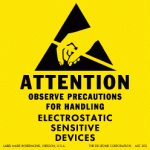Kickstarter, Hardware, and Project Failure
Posted by FirmWarez on 25 Sep 2012 in Blog | 0 comments
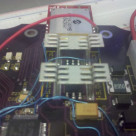
When I’m not picking locks, listening to The Crystal Method, or hacking hardware, I actually get involved in legitimate businesses and business dealings.
For the past few years I have volunteered my time to judge the “innovation” prize in a statewide collegiate business plan competition. It has always been a rewarding experience, even if I’m surrounded by bankers with ties instead of haxors with beer. Hey, I can wear a tie too, but the bankers don’t know what to make of me.
Based on my experiences with business start-ups, judging business plans, and developing hardware, I have to admit that I completely support Kickstarter’s new project rules.
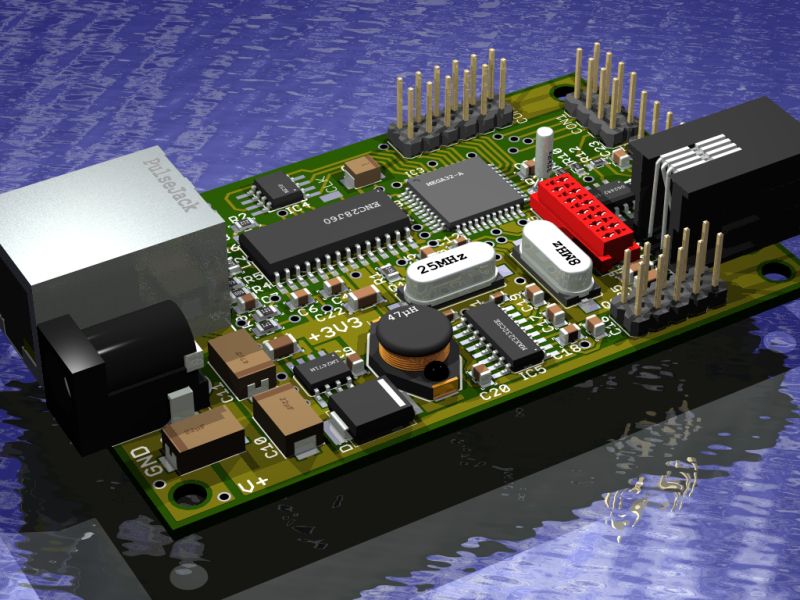
Let’s take a look at the new rules one by one and compare them to “real” VC/business plan concerns.
1) “Creators must talk about “Risks and Challenges””
Wow. What a stretch! Or not. Look, in the “real world” – I put that in quotes, because of course Kickstarter is a viable option, and “real”, perhaps even more real these days than traditional options. Maybe I should say “traditional start-up financing circles”; anyway, in the “real world”, a business plan is pretty much 1) grab their attention with idea that is profitable, and then 2) tell them how and why your team can meet the challenges of completing that project and making profit.
If a project creator hasn’t analyzed, even informally, the risks and challenges they are facing, well, it’s not a project. That dear ponies is called an “idea”, and while nifty, isn’t really much more than…an idea.
Even if you aren’t reaching out on Kickstarter, isn’t it a good idea to determine the risks your project faces? Project management is risk management.
2) “Product simulations are prohibited. Projects cannot simulate events to demonstrate what a product might do in the future. Products can only be shown performing actions that they’re able to perform in their current state of development.”
3) “Product renderings are prohibited. Product images must be photos of the prototype as it currently exists.”
I’m going to lump 2 and 3 together. They are the same thing. Ok, so in the “real world”, there are all sorts of nifty renderings and simulations of products used to pitch start-ups. I see the value of this for pitching new businesses; some projects and concepts are very difficult to express, and frankly “real” business plans are as much glitz and popularity contest as any other human activity. Yes, they are, and don’t let anypony tell you it’s “just about the numbers and profitability”.
There is start-up glitz, glamor, and the cool rockstar kid can sell gold plated dog turds faster than the unknown can sell a genuine solid new idea. “Silicon Valley” and tech businesses are a history of this, and oddly it’s a history that many on the business side haven’t learned from.
So, yes simulations and renderings can be a helpful tool. But not only do I agree with Kickstarter’s move on this, I wish I could ban their use in the business plan competition I judge. Not because it’s not representative of real world business plan pitching, but because it would force the competing teams to realize how hard it is to get from idea to having a prototype in hand. Of course I judge the plans that way already; those with something real in hand get far more “points” in my book than those with nifty drawings of “here’s what maybe if we get there someday we might build. Maybe. Kind of.” Homie don’t play that.
Why? Well, like I said, a pitch is all about convincing the audience two things: 1) our idea rocks, and 2) we are the ones who can make it happen.
These new Kickstarter rules are all about item 2. And item 2 is all about convincing the listener that your team can minimize risk. What’s one of the riskiest aspects of a hardware project? Going from idea to prototype. It’s why ideas are a dime a dozen, but people like me charge $150 an hour to design, build, and debug prototypes. I hate to break it to you, but an idea is pretty much worthless. Add value to that idea. All the work it takes to go from idea to prototype is value.
Simulations and renderings often remind me of the old “world of the future” types of pictures from Popular Science and so forth. These images are clean, hyper perfect, with lighting and appearance cinematographers would kill for in “real world” settings. They are like the fake burgers in fast-food commercials, hours and hours of a specialist molding wax and painting. No real burger can look that good. If you are trying to pitch a start-up restaurant, let me taste the food, don’t show me a picture of hyper-real fake food. The same is true with new hardware, show me the thing working, not an artist’s perception of it working.
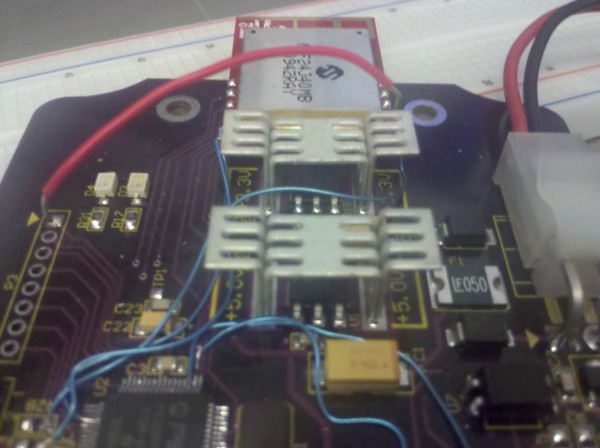
“Hey, my slick 3D render of the board didn’t have all these jumper wires!”
4) “Offering multiple quantities of a reward is prohibited.”
I can see the reasoning behind this. Kickstarter claims “offering multiple quantities feels premature, and can imply that products are shrink-wrapped and ready to ship”. Yeah, there’s some truth to that. I also have to wonder if part of it is that looks an awful lot like offering a distributorship, which seems a bit more like an investment return than a thank-you ‘reward’. SEC regulations are a topic for another day…
I’m going to add another “rule”, or at least a bit of advice. A “real” VC wants to see something critical. It is something that creates that “rockstar” situation I mentioned above. What’s the best way to alleviate risk of creating a new product? Have someone on your team who has, guess what, done it before.
I think some folks will feel “these rules unfairly single out hardware projects”. Well, did you read this from Ethan Mollick, Assistant Professor at theUniversity of Pennsylvania, Wharton School who states “that the vast majority of founders make serious efforts to fulfill their obligations to funders, but that over 75% deliver products later than expected, with the degree of delay predicted by the level and amount of funding a project receives.” (Go here for more from his article “The Dynamics of Crowdfunding: Determinents of Success and Failure” .)
Ok, projects running late are the norm everywhere. We all know that in the real world, project schedules are guidelines, and that slip is expected. Of course we also know that things like Formula 1 teams operate in the real world, and that car better be in the starting grid come race time, no excuses.
Why is it hardware projects get singled out? And why are hardware projects (apparently) more prone to failure? I’ve managed engineers for a while. I see some patterns of behavior, and I’ve noticed a major difference between software folks and hardware types.
It’s easy to make software look pretty. These days anypony can use a CMS and some slick pictures and toss up a nifty looking web site. The same is true for a stand alone software application. A mock-up of a smart phone ap can be done quickly, and really, just looking at it, how can you tell the difference? Software functionality can be added incrementally. It’s “just another compile away”. It’s actually one of the exciting things about developing software. It’s fast. It’s incremental. It’s modular.
Hardware, in general, isn’t. Good hardware guys spend a lot of time planning. That’s not to say good software guys don’t, of course they do. But mistakes in hardware can be very difficult to overcome. A bad printed circuit board layout can mean weeks wasted, thousands of dollars spent, and practically _no_ progress. I’ve seen it happen, and it’s not pretty. Rarely with software do you have to “go back to the drawing board”, but with hardware, if things go bad, you may have to respin the board. Ouch. It’s a lot easier to recompile than get new boards in. The most talented PCB layout artist I know would spend hours drinking coffee, “doing nothing”. Staring at the rat’s nest. What he was doing was planning the board in his mind, looking for problems before they occurred.
So what does this have to do with the new Kickstarter rules?
Hardware is difficult. Hardware projects can seem to be almost there, but require a complete rethink, nearly starting over. By presenting a prototype that functions at some level, the creator is showing they’ve been through that difficult but educational process, and have a higher chance of successfully completing a project.
Renderings and simulations are great tools. But they are that “theory and practice” thing we’ve heard over and over. The difference between theory and practice means that there is essential, critical experience to be gained by actually building and operating hardware. If the excitement of software is the ability to quickly try and change, the excitement of hardware is realizing that the actual experience of deploying, testing, and operating is real value, and can’t be traded for all the simulations in the world. It is a critical part of the design and development process. I’ve said this before here, it’s why we line up race cars. If it could all be simulated, why race? Because experience counts, and because a simulation just isn’t the same thing as building.
Do you have any idea how many times over my career I’ve seen a start-up pitcher talk about going from idea to prototype like it was nothing? Or had engineers tell me “well, it worked in simulation…” Ugh. This stuff is hard. But you know, that’s good. There was a great man who once said “we choose to do these things…because they are hard”. Embrace the challenges; relish in the risk. If you identify the risks…well, a known problem really isn’t a problem, is it?
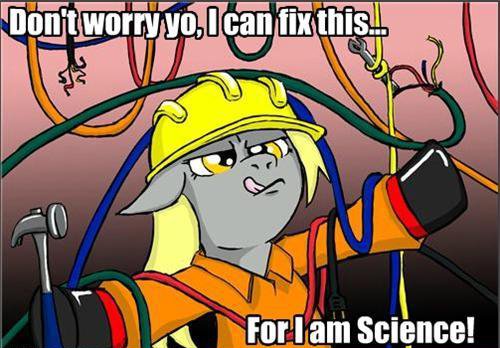
« Microchip Myths | Invincible »
